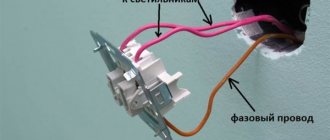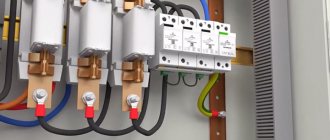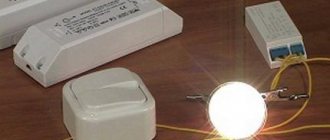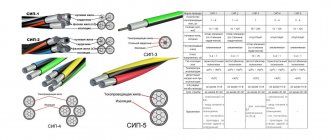Change No. 1: is it possible to arrange an offline connection, bypassing SNT?
Summer residents now have the opportunity to connect to power grids directly by concluding a separate agreement with the power company.
This will allow you not to depend on other members of the SNT and not to undertake obligations to pay the debts of defaulters. In order to create an offline connection, you must:
- find out the name of the electricity supplier for the territory of a particular SNT and submit an application to them for concluding an individual electricity supply contract;
- Attach to the application confirmation of membership in SNT (certificate or gardener's book), as well as documents on the technological connection of SNT to the power grid;
- contact the network organization with a request to install an electric meter.
The Ministry of Energy reminds that from 2022, at the request of consumers, network operators are required to install individual electricity meters (letter of the Ministry of Energy of the Russian Federation No. 09-409 dated 02/05/2021).
The ConsultantPlus system contains a form for the minutes of a meeting of the SNT board on concluding an agreement with organizations supplying heat and electricity, water, gas, drainage, landscaping and protection of gardening areas... Get free trial access to K+ and proceed to the document.
What documents on technological connection should the consumer have;
What documents on technological connection to the electrical network should each consumer have?
The Act on Technological Connection is the main document confirming the consumer’s connection to electrical networks.
In addition, the consumer is issued an act of delimitation of the balance sheet ownership and operational responsibilities of the parties - a document that contains information about where the electrical networks of the network organization are located, and where the consumer’s power receiving devices are located, the physical voltage level of the consumer is determined, and also indicates who is responsible for maintaining the electrical networks.
After receiving all the specified documents, the technological connection procedure is considered completed by the consumer.
Thus, the consumer is considered connected to the power grid.
Attention - all of the above Acts are drawn up free of charge.
An example when documents may be needed: After acquiring a non-residential premises in which a clothing store was previously located, the new owner must complete the following steps to re-register documents for electricity connection (technological connection) in his name: The new owner of the premises must send an application to the network organization in a simple manner in writing, which must contain the name and location of the energy receiving devices (real estate objects) in respect of which an application for re-registration of power has been submitted, the amount of power to be re-registered, and also the purpose of electricity consumption, i.e. the type of activity for which electricity was previously used and the planned type of activity after the re-registration of power.
In this case, the new owner is obliged to provide the above documents to the energy supply company - the Guarantee Supplier (for example, Mosenergosbyt PJSC).
It is worth noting that even in the absence of documents confirming the technological connection of the facility from the old owner, the network organization does not have the right to repeatedly demand payment for technological connection from the new owner and must re-issue the act of technological connection and the act of delimitation of balance sheet and operational responsibility to the new owner for 1000 rubles.
Example: After acquiring part of a five-story building of a former research institute, by agreement, part of the connected capacity of the former research institute became the property of the new owner. The actions of the new owner of a part of the building to obtain all the necessary documents (act of technological connection and act of delimitation of balance sheet ownership of the parties and operational responsibility) should be as follows:
- The new owner and the old owner of the building must sign an agreement stating that they do not object to the redistribution of the connected power. An example of an agreement is provided in the section “Consumer Handbook”;
- These persons send a notification to the network company and a signed agreement on the redistribution of power. The notice must contain the following information:
- names of organizations (names of individuals), as well as details of the parties;
- power center (cable line, feeder, substation) to which the specified persons are connected;
- it is necessary to indicate where the energy receiving devices of the indicated persons are located;
- volume of redistributed power.
- The notice and agreement on redistribution of connected power (power distribution) is accompanied by:
- from the person in whose favor part of the power is being refused - an application for technological connection, which will be made by redistributing power, from power receiving devices connected to the power grid before January 1, 2009;
- from a person who refuses part of the power in favor of another person - an application to reduce the volume of its own power, indicating that it should be redistributed to another person.
After submitting all the necessary documents, the network company must draw up, free of charge, an act of technological connection and acts of delimitation of balance sheet ownership and operational responsibility for both parties (old and new owners).
Example: After purchasing an apartment located on the 1st floor of an apartment building, the owner decided to transfer it to non-residential premises to open a grocery store.
Transferring an apartment to non-residential use and then renting it out or using it to open your own business is a fairly common type of entrepreneurship and is widely used as a means of investment. But the owner of the apartment faces problems with transferring this apartment to non-residential premises and re-registering power in the network company.
It is this question that often becomes a “stumbling block” when determining the amount of connected capacity for running a business. It's no secret that the capacity of a grocery store can exceed the capacity of a residential apartment due to the large amount of refrigeration equipment, lighting, etc. Therefore, the first question that arises between the owner and the grid company during technological connection is what amount of power has already been received by the developer in the process of technological connection of the entire residential building, and what part of the power falls on a specific apartment. Thus, the technological connection of a premises transferred to a non-residential property should not be considered as a new technological connection and its cost should also take into account the power of electricity allocated to the developer of an apartment building when connecting to the electrical networks of an apartment building.
So, we have considered possible options for connecting consumer facilities to the electrical grid. However, the voltage has not yet been applied and the consumer cannot use electricity.
All this is due to the fact that the consumer is not supplied with voltage (although he is already connected to the power grid). Voltage can be supplied after the conclusion of an energy supply (purchase and sale) agreement between the consumer and the supplier of last resort or an independent energy sales company.
In this regard, the next stage in the consumer’s receipt of electricity will be an application to conclude an energy supply agreement . Conclusion of an energy supply agreement .
In accordance with clause 34 of the Basic Provisions, which describes the procedure for concluding an energy supply agreement, a consumer who intends to enter into an energy supply (purchase and sale) agreement sends to the guaranteeing supplier the documents that the consumer must prepare in order to conclude an energy supply agreement:
- A draft energy supply agreement signed by the consumer, the text of which is published on the official website of the guaranteeing supplier (provided at the request of the applicant);
- title and other documents (certificate of state registration of the applicant as a legal entity or as an individual entrepreneur, certificate of registration with the tax authority, documents that must confirm the authority of the signatory of the agreement and applications for concluding an agreement on the part of the consumer, a copy of an extract from the protocol , a decision or order on who is appointed to the position of head of the company, a power of attorney for the signatory of the agreement on the consumer’s side, if the agreement is not signed by the head of the enterprise, a copy of the passport, if the agreement is concluded by an individual entrepreneur or citizen);
- documents that confirm ownership (other rights of ownership and disposal) of energy receiving devices, or documents that confirm the right of ownership and use of the site in respect of which it is necessary to conclude an energy supply agreement for the supply of electricity;
An act on technological connection and (or) an act on delimiting the balance sheet and operational ownership of electrical networks (if any) or an agreement on those connections, a request from the network company to receive duplicates of the specified documents. In the event that the network organization or other owner of the electric grid facilities to which the consumer is connected may evade issuing these acts, then the consumer (if there is evidence confirming the application to the network organization) has the right to apply for the conclusion of an agreement with the documents available to him . And the guaranteeing supplier does not have the right to refuse to conclude an agreement and must independently request the missing documents from the network organization;
- certificate of admission to operation of metering devices or other documents confirming the fact of admission to operation of metering devices (provided if the applicant has metering devices);
Other documents necessary for concluding an energy supply agreement may include:
- documents containing a description of metering devices installed in relation to energy receiving devices, indicating the types of metering devices and their accuracy classes, and their installation locations. Factory numbers, dates of previous and next state verification. Such a document may be a passport of the metering device with a mark from the state verification body and other documents related to it;
- single-line diagram of the consumer's electrical network (if the consumer has an electrical network).
All specified documents are submitted either in the form of copies of documents certified by a signature and seal, or with the simultaneous provision of both copies and the original for verification of the authenticity of the copies.
The supplier of last resort is obliged, within 30 days from the date of receipt of the application for concluding an agreement, to present to the consumer a signed draft energy supply (purchase and sale) agreement - if the consumer did not send the draft himself, or to sign the draft agreement sent by the consumer.
Of course, in the process of concluding or executing between the consumer and the electricity supplier, disputes may arise regarding energy supply contracts, however, judicial practice and expert advice can avoid the risk of developing an unfavorable situation for the consumer and avoid losses due to insufficient elaboration of the draft energy supply contract received from the guaranteeing supplier. If the consumer knows his rights, the parties to the energy supply contract will always come to an agreement!!!
To receive these legal services, you just need to leave your contact information in a way convenient for you or:
- fill out the form on the website,
- contact via email -
- call by phone - +7 (985) 929-79-06
- call on skype
- send contact via
and we will make you an offer you can’t refuse!
Sincerely, founder of the ENERGOSCHET project, Candidate of Legal Sciences Yuriy Petrovich Garkavy
Change No. 2: The time frame for connecting houses to power grids has been reduced
Another change was a significant reduction in the time it takes to connect citizens’ homes to power grids. If previously the connection period was up to four months, now it has been reduced to 30 working days.
This norm is enshrined in Decree of the Government of the Russian Federation No. 639 dated April 26, 2021.
However, in order to benefit from the reduced period, the following conditions must be met simultaneously:
- voltage class of electrical networks is not more than 0.4 kV;
- the distance from the networks to the boundaries of the site is no more than 15 m;
- there are no objections from the owners of neighboring plots that are located between the power lines and the applicant’s plot;
- The network organization is not required to carry out work on the construction or reconstruction of electrical networks.
Connection deadlines
It must be borne in mind that the technical specifications remain valid for 2 years. The legislation states that the network organization is obliged to fulfill its part of the obligations under the technical specifications within 6 months from the date of signing the agreement. In the remaining time (before the expiration of 2 years), the applicant must fulfill his obligations. Then he sends a notification to the organization, which within 10 days inspects the conditions fulfilled by the applicant, and in the next 5 days, if there are no complaints, implements the actual connection of the consumer to electricity.
Change No. 3: The list of grounds for connecting to a preferential tariff has been expanded
We remind you that there is currently a reduced tariff for connecting to electrical networks - only 550 rubles. (Clause 17 of the Decree of the Government of the Russian Federation No. 861 of December 27, 2004).
In order to take advantage of the discounted rate, the following conditions must be met:
- device power consumption - no more than 15 kW;
- the distance to power lines with a voltage level of up to 20 kW is no more than 300 m (in the city) or 500 m (in the village).
From March 2022, owners of generators with a capacity of up to 15 kW can connect at a reduced rate (RF Government Decree No. 299 of 03/02/2021).
Owners of such generators submit an electronic application to the supplier and enter into an electricity purchase and sale agreement with him. The energy generated by the generator will be counted using a special bidirectional meter and will be included in mutual settlements. Please note that income from the sale by an individual of such electricity is exempt from personal income tax (clause 28.1 of article 217 of the Tax Code of the Russian Federation).
The nuances of moving the connection point
Along with the new rules, the conditions for connecting to electrical networks regarding the point of connection have changed. Now it has to be taken outside the site. The maximum permissible distance to a nearby support from any point on the site is also determined - 15 meters. In the previous version of the standards, the distance was 25 meters. Also, it did not specify that the point should be located on the outside of the border of the site.
Accordingly, homeowners who connected to power grids before tried to insist that the point be 25 meters from the boundaries, but inside the site. One loophole allowed this interpretation to be used. Many took advantage of this, forcing power engineers to install the poles closest to the house within the site free of charge.
According to the new rules, the connection point must be located outside the site and be 15 meters away from it. Accordingly, site owners connected to the network will now install additional support at their own expense.
Results
Owners of garden plots can now enter into an autonomous power supply agreement, bypassing SNT. The time it takes to connect houses to power grids has also been reduced. Owners of autonomous low-power generators can sell the generated energy to the electricity supplier, the payment will be offset against the payment for consumption from the networks.
Find out more about the procedure for taxing income with personal income tax in our “Personal Income Tax” section.
You can find more complete information on the topic in ConsultantPlus. Free trial access to the system for 2 days.
Electricity connection standards: main points
When constructing any residential property, the issue of connecting communications to it is one of the most important, especially with regard to power supply, because it is simply unimaginable to imagine a modern house without electricity.
But the supply of electricity to a home itself is only half the battle; the power supply must be organized in such a way as to ensure maximum comfort and safety of operation. So, speaking about the standards for connecting electricity, you first need to submit an application for connecting electricity to a company that provides such services. In this case, it is better to immediately raise the issue of increasing the minimum power (it is 15 kW), so that later, when electricity consumption increases, you do not have to return to this topic. Having received permission, you can contact the design organization and order an electrical project. And already having a ready-made project in hand with all the clarifications, nuances and details, you can begin connecting the house to electricity.
The most common type of connection is the air connection. This option is the simplest; it involves connecting the house through a power pole using a cable. This cable is called “self-supporting insulated wire” (SIP), has a special cable that protects it from weather conditions, and consists of current-carrying cores. The best option for such a connection is a wire of the SIP-4 brand, the cable cross-section is in the range of 16-25 sq. mm. The wire is secured with special anchor clamps, one for each core; if there is a need to make a branch from the main cable, then branch clamps are used. Through a pipe that is laid through the wall, the wire is brought into the house and connected to the electric meter. There are connection options when the connection to the meter occurs from the outside, or there is the option of connecting the voltage stabilizer also from the outside; it all depends on the specific conditions and wishes of the customer.
To connect electricity in a hidden (underground) way, cables without a supporting cable or cores are used. A trench is dug in the ground to a depth below the freezing level, the cable is laid in a corrugated pipe on a sand cushion and also covered with sand on top. The wire should not be stretched under any circumstances, but should be inserted directly into the house, similar to the air method. After completing the entire range of electrical installation work, it is necessary to call a representative of the energy supervision authorities so that they accept the work, seal the meter and draw up all the necessary documents.











